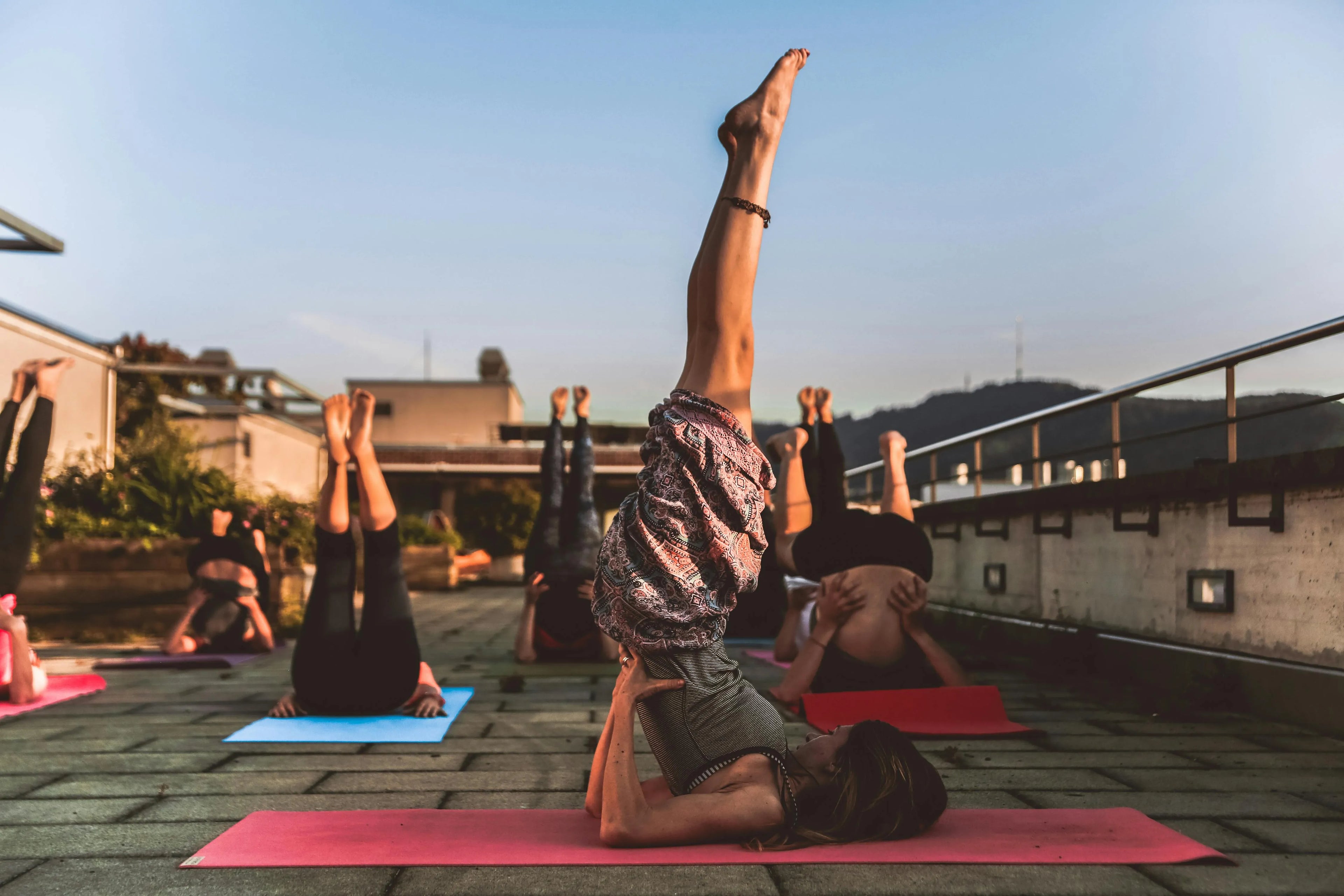Yoga Mat Material Guide: Discover the Healthiest, Safest Options (+ Top Picks for 2025)

Introduction: Why Your Yoga Mat’s Material Matters More Than You Think
Did you know that 73% of yogis overlook their mat’s material—despite spending hours sweating on it daily? While yoga promotes wellness, your mat could secretly harbor harmful chemicals like phthalates or VOCs. From PVC’s hidden risks to eco-friendly alternatives like TPE and cork, this guide dives into what your yoga mat is made of, why it matters for your health and performance, and how to pick the safest option for your practice. Let’s unravel the science behind yoga mat materials and spotlight brands doing it right (including our top TPE pick!).
Are All Yoga Mats PVC? Debunking the Most Common Myth
No, not all yoga mats are PVC! While PVC (polyvinyl chloride) dominates the market (especially in budget mats) due to its durability and affordability, growing demand for sustainability has spurred alternatives. Here’s a breakdown:
-
PVC Mats: Cheap, long-lasting, but often contain phthalates (linked to hormone disruption) and lack biodegradability.
-
Non-PVC Alternatives:
-
TPE (Thermoplastic Elastomer): Recyclable, lightweight, and free of heavy metals (ideal for eco-conscious yogis).
-
Natural Rubber: Biodegradable, grippy, but avoid if you have latex allergies.
-
Cork/Jute: Antimicrobial, sustainably harvested, but less cushioning.
-
Organic Cotton: Chemical-free and breathable, best for gentle practices.
-
Pro Tip: Avoid mats labeled “PVC-free” but made with synthetic rubber—they may still emit VOCs.

What Is the Healthiest Material for Yoga Mats? (Ranked)
The “healthiest” material balances non-toxicity, performance, and sustainability. Here’s our 2025 ranking:
-
Natural Rubber
-
Why Healthy? Biodegradable, free of PVC/phthalates, and offers superior grip.
-
Best For: Hot yoga, power flows.
-
Brand Pick: Manduka eKO SuperLite (OEKO-TEX certified).
-
-
TPE (Thermoplastic Elastomer)
-
Why Healthy? Free of toxic chemicals, recyclable, and lightweight.
-
Best For: Travel, everyday use.
-
Brand Pick: Sportive Lives TPE Yoga Mat (6mm thickness for joint support).
-
-
Cork
-
Why Healthy? Naturally antimicrobial and temperature-regulating.
-
Best For: Eco-warriors and hot yoga.
-
Brand Pick: Yoloha Cork Mat (sustainably harvested).
-
-
Organic Cotton/Jute
-
Why Healthy? Breathable and chemical-free.
-
Best For: Meditation/gentle yoga.
-
Brand Pick: Gaiam Organic Cotton Mat.
-
Avoid: PVC mats with “odor-resistant” coatings—they often mask harmful chemicals.
What Material Should a Yoga Mat Be? Match Your Practice Style
Your ideal mat material depends on your yoga style:
-
Hot Yoga/Power Flow → Natural rubber (sweat-proof grip) or cork (antibacterial).
-
Travel/Yin Yoga → TPE (lightweight, cushioned). Example: Sportive Lives 6mm TPE Mat Eco-friendly and absorbs impact.
-
Meditation/Restorative → Organic cotton or jute (grounding texture).
-
Outdoor Yoga → Recycled rubber or thick TPE (weather-resistant).
How to Choose a Safe Yoga Mat: 5 Non-Negotiable Checks
-
Certifications Matter: Look for OEKO-TEX, Eco-Institut, or GOTS labels.
-
Avoid These Chemicals: PVC, phthalates, parabens, and formaldehyde.
-
Sniff Test: A strong chemical odor signals high VOC emissions.
-
Thickness & Density: 6mm mats (like Sportive Lives) balance cushioning and stability.
-
Brand Transparency: Prioritize companies disclosing material sources.
Red Flag: Mats marketed as “antimicrobial” but made with PVC—opt for natural cork instead.

Best Yoga Mat Materials for 2025: Top 5 Picks
-
Natural Rubber: Jade Harmony Mat (tree-planting program).
-
TPE: Sportive Lives 6mm TPE Mat (budget-friendly, extra cushioning for knees).
-
Cork: Yoloha Unity Mat (durable, grippy).
-
Organic Cotton: Hugger Mugger Eco-Friendly Mat.
-
Jute: Ekaminhale Jute Mat (textured for alignment).
Why Sportive Lives Stands Out:
-
6mm Thickness: Ideal for joint support during long holds.
-
Eco-Conscious TPE: Free of PVC, latex, and heavy metals.
-
Travel-Friendly: 30% lighter than rubber mats.
-
Special Offer: The first order is half price.
Conclusion: Invest in Your Practice—and the Planet
Your yoga mat is more than a workout accessory—it’s a daily companion impacting your health and the environment. By choosing non-toxic materials like TPE or natural rubber, you protect yourself while reducing microplastic waste. Ready to upgrade? Explore our top pick, the Sportive Lives TPE Yoga Mat, And get 50% off your first order.
Your Turn: What’s your favorite yoga mat material? Share below—we’d love to hear from you!




Leave a comment
All comments are moderated before being published.